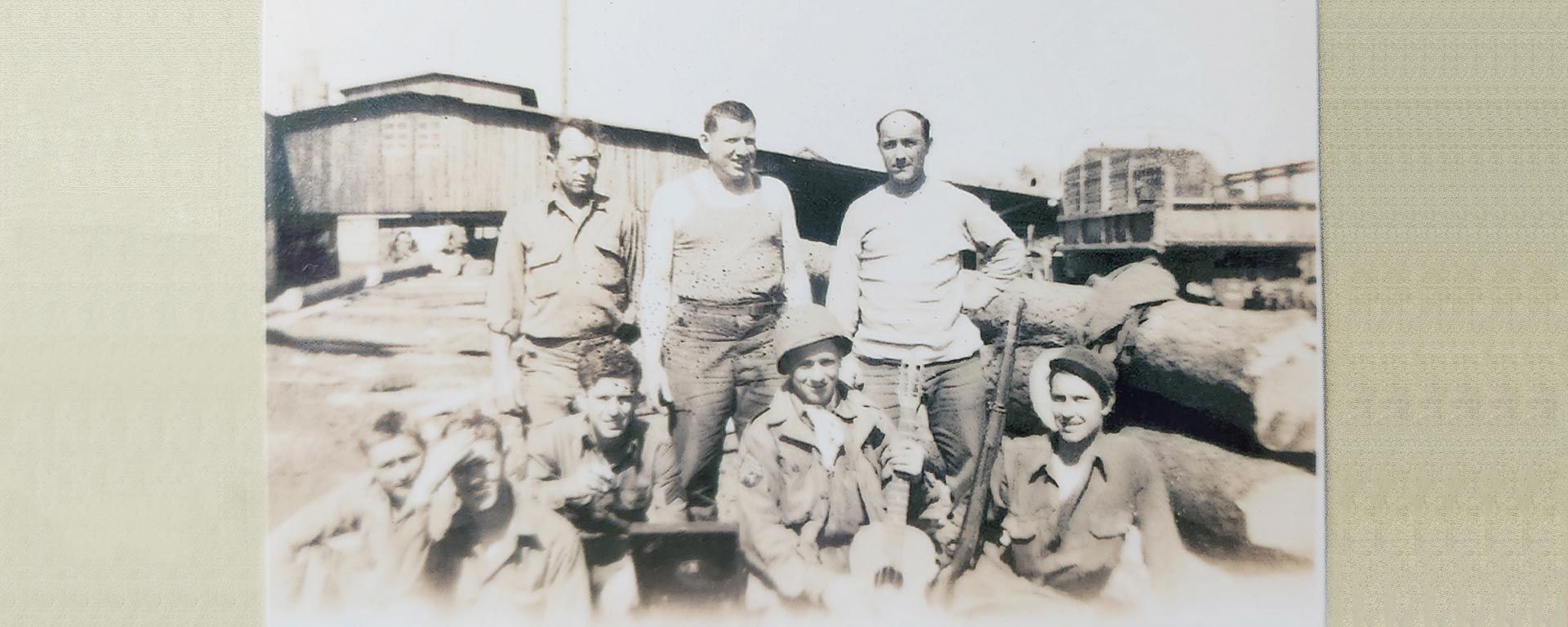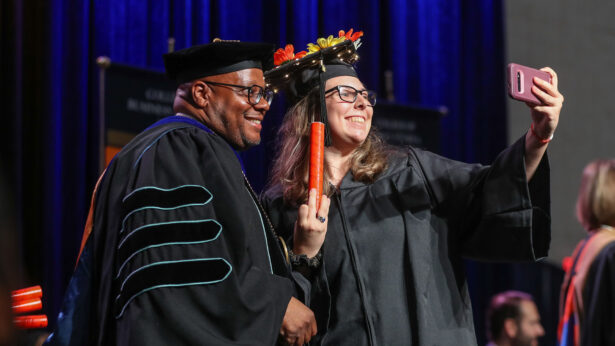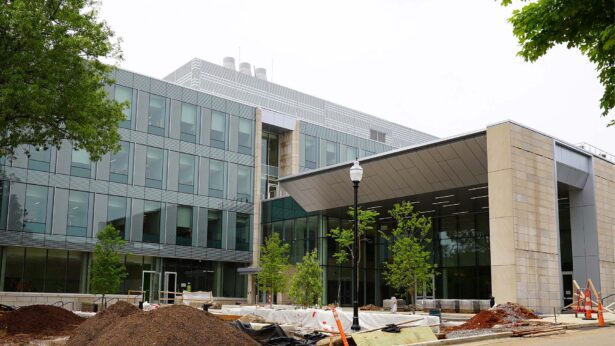He sat relaxed in his recliner with his 163rd Combat Engineers Battalion jacket on his lap, surrounded by worn photos from his service in France, Germany and Austria, and transported the room back to 1943.
“We were combat engineers,” T Joe Walker says. “We went into France and built bridges and were there on until the end of the war. I was in charge of Company B of the 163rd Combat Engineers. We built wooden bridges, pontoon bridges, treadway bridges, just about every kind of bridge you could think of.”
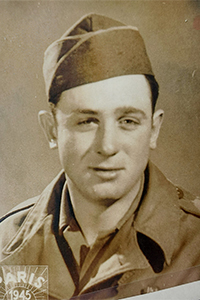
The 99-year-old Martin native, along with three of his brothers, served in the Army during World War II. Walker, a T/4, or technician fourth grade, by the end of 1946 was just thankful he made it home from the war alive and in time to marry the girl who wrote him letters.
Walker received his draft notice from Weakley County while he was working in Michigan and began basic training in Mississippi in May 1943 with the “Striped-Ass Apes”—the 163rd’s nickname. The 163rd’s emblem features an ape with stripes on its rear, a hammer in one hand and a rifle in the other. The battalion coined its name and emblem during training at Camp Van Dorn because they worked with a hammer in one hand and a rifle in the other, Walker says.
“Camp Van Dorn. Sorriest place there ever was,” Walker says. “Ah, but it turned out to be all right.”
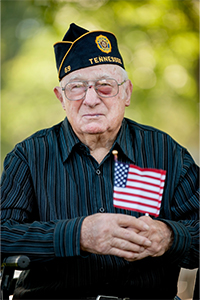
In an interview with Discovery Park of America, Walker says that a lieutenant told him during basic training that “he was going to make a bridge builder out of me if it killed us both.”
Walker was thankful they were successful in their training without it coming to that.
Soon, Walker and the 163rd were on their way to Europe. After preparing for combat at a station in England, the battalion landed on Utah Beach on June 21, 1944, just weeks after D-Day. They quickly assumed their responsibilities and began combat support. The 163rd cleared roads for troops, built bridges, trucked supplies and occasionally acted as infantry when the situation called for it.
“I don’t remember how many bridges we built, but it was a bunch of them,” Walker says.
The 163rd traveled from Normandy, France, to Linz, Austria, building bridges to transport troops, vehicles, munitions and supplies across Europe. Overall, the 163rd built 42 bridges, totaling 4,844 linear feet. They carried what supplies they could and relied on the natural resources available for many of their operations.
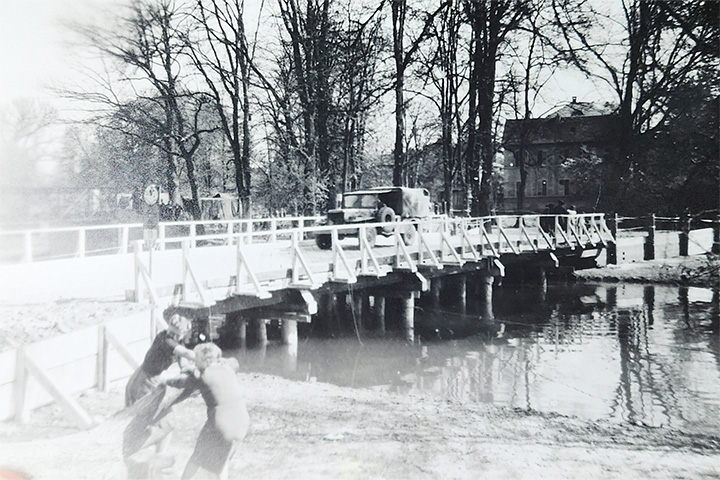
A model of a fixed timber trestle bridge Company B built was donated by Walker to Discovery Park of America in Union City and is currently on display.
One of Walker’s most memorable experiences began while working at a gravel pit near Gen. George Patton’s headquarters. During the invasion of France, the 163rd served with the 1st Army, but as they moved inland, the 163rd transferred to Patton’s 3rd Army. While crushing rocks, a Jeep carrying Patton arrived, and seeing the threestar emblem on the jeep, everyone except for a corporal stopped working and saluted. Patton noticed the corporal and approached him asking if he knew who he was.
“No,” the corporal said.
“I’m General Patton.”
“He said, ‘I’m glad to meet you. I’m Andy,’ and stuck his hand out to shake Patton’s. He got chewed out,” Walker says through laughter. The corporal was thrown in the brig for the night and never forgot who Patton was, according to Walker.
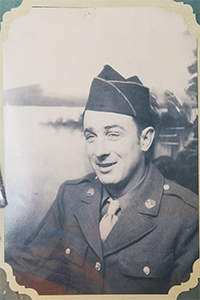
Even though Walker worked as an engineer, the 163rd often operated under enemy attacks, including air assaults and ambushes. His daughter recounts an attack where Walker and some of his soldiers barely escaped sniper fire when evacuating a combat zone in Germany.
While retrieving a supply truck for the company, Walker spotted a sniper and warned the driver right before the driver was shot in the shoulder. Walker drug his fellow soldier out of the truck to shelter nearby until the shooting was over.
“When they got the truck back and where daddy was sitting, there (were) bullet holes all through it,” Shelia Thompson, Walker’s daughter, says. “So if (Walker) hadn’t seen the sniper, it would have killed him.”
“It came close a lot of times,” Walker says. “I was one of the lucky ones.”
One of Walker’s brothers wasn’t as lucky. Harvey, who served in the U.S. Army Air Force, was killed in action in the South Pacific in 1945. Two of Walker’s other brothers, Harold and Bert, also served during World War II.
After the war, Harvey’s body was returned home so the family could bury him at Halter’s Chapel in Weakley County, with T Joe, Harold and Bert in attendance.
When Walker returned to West Tennessee in January of 1946, he waited only three days before getting married— twice. He and his soon-to-be bride, Verna, had only met once before Walker left for the war, but their love for each other grew through the letters they wrote, becoming a source of light in a dark time.
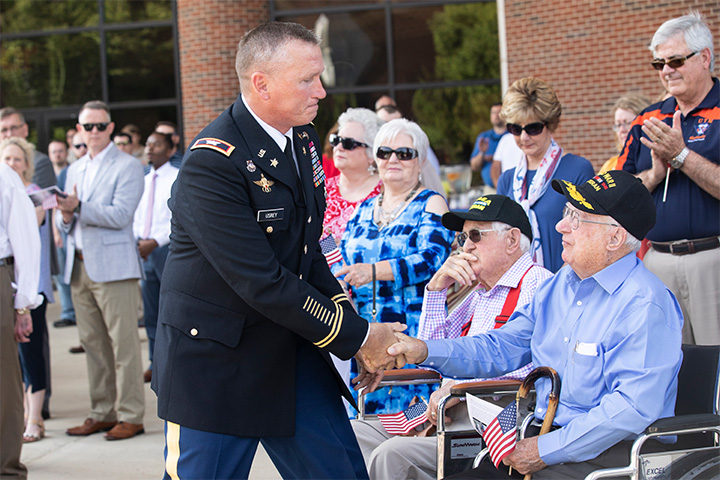
The pair first met during an outing to a strawberry patch with a group of mutual friends. His family says that was the only time they were together in person, but when Walker was drafted, the letters and their love story began.
“Yeah, we wrote a lot of letters,” Walker says, smiling.
When Walker found out he was coming home, he sent Verna a telegram telling her to wait for him to get home before she left Martin after Christmas to return to Chicago to work at an ammunition plant.
After arriving in Martin on Jan. 7, 1946, he quickly headed to Verna’s family’s house to propose. However, since she didn’t know exactly when he was coming home, she and her family were on their way to town.
“They met on the railroad tracks,” Thompson says.
“They saw each other, and they both jumped out of their vehicles, and that’s the first time they had actually talked in person since the war.”
On Jan. 10, the couple said “I do” at their preacher’s house in Gibson County.
However, they had received their marriage license in Weakley County and, at that time, were legally required to marry in the same county from where they received their license. After noticing the discrepancy, the preacher rushed to Walker’s parents’ house in Martin to remarry them, creating their iconic story that has been shared through the generations.
“I always said their love story was a Hallmark movie,” Christel Thompson Laney, Walker’s granddaughter, says. “They never dated, and they got married twice.”
The couple were married for 69 years before Verna died in 2015. Now, Walker remembers her light through the letters, photos and a lifetime of memories shared.
After the pair married, Walker tended to his family farm and worked at the Red Rock Bottling Company before being hired at the UT Martin Branch in 1951 as the head of mechanical maintenance. Using the skills he learned as an Army engineer, Walker oversaw the heating, air conditioning and plumbing systems on campus.
“When he started there, there were only 400 students. His (tools) he carried all over campus in a wheelbarrow,” Thompson says.
Now the University of Tennessee at Martin, the college is home to over 6,800 students and has grown to a 250- acre main campus with a 680-acre teaching farm and five regional centers.
“I saw it grow. I saw UT grow,” Walker says.
Walker retired from his full-time job at UT Martin in 1985 but quickly returned as a part-time employee until his final retirement in 2003. He has seen many changes over the years and cherishes being a part of the growth of the university that provided a livelihood for him for many years.
“He has always supported the changes and improvements,” Thompson Laney says about her grandfather’s feelings toward the university.
While he didn’t have any family in attendance at UT Martin, Walker could be found cheering on the Pacers and then the Skyhawks at many athletic events at the university, even after his retirement.
Walker will celebrate his 100th birthday in December, and while his memory of the war and his following careers have faded, his family says he is and always will be proud of his service.
The 163rd held reunions for many years after the war, growing in participation each year. Eventually, there were 163rd “Striped-Ass Apes” coming to West Tennessee from all over the country to reunite with fellow soldiers and families.
According to the U.S. Department of Veterans Affairs, as of 2022, roughly 167,000 of the 16 million men and women who served in World War II are still alive. The population is quickly dwindling, but Walker will always remember the men he served with and the sacrifices each one made for his country.
